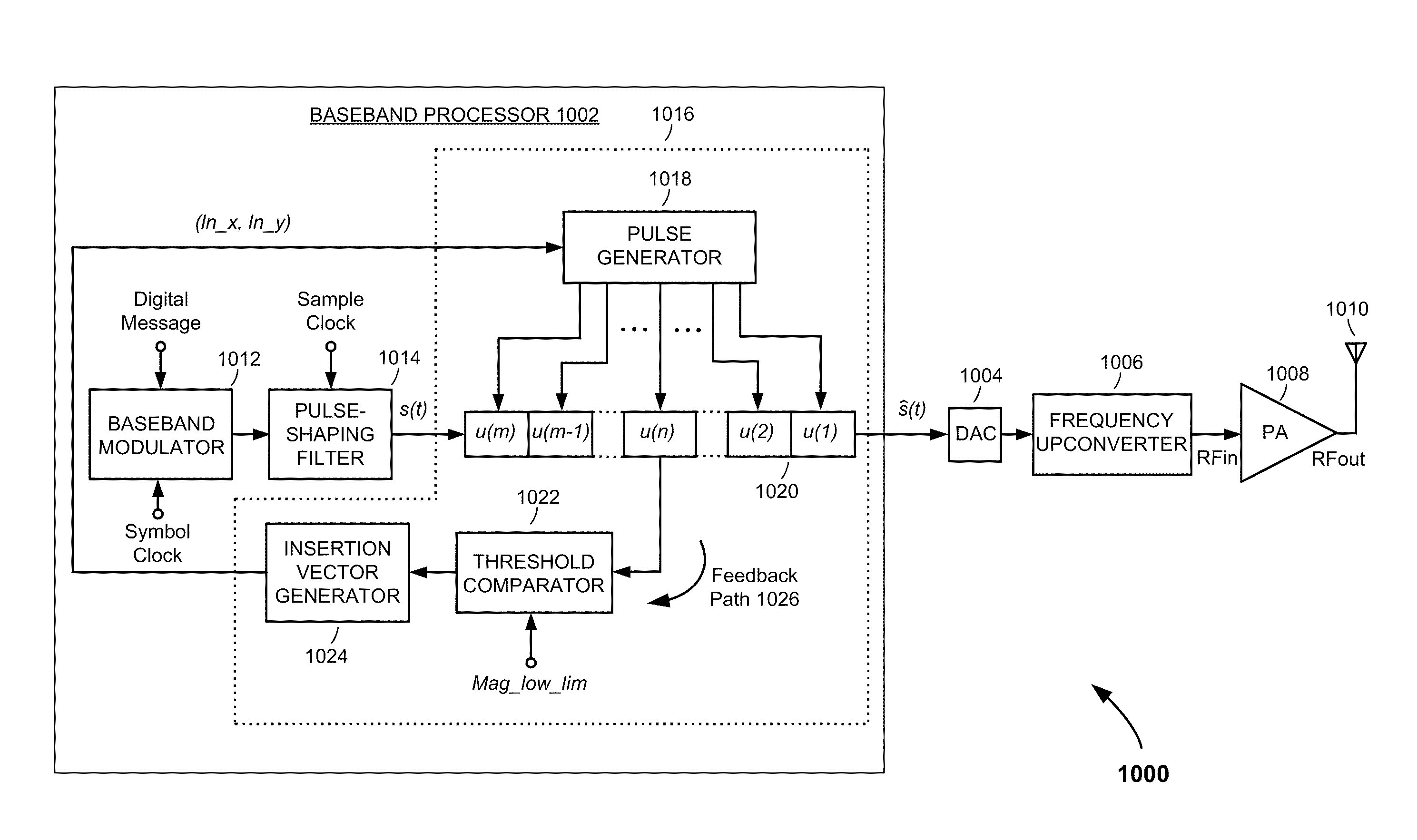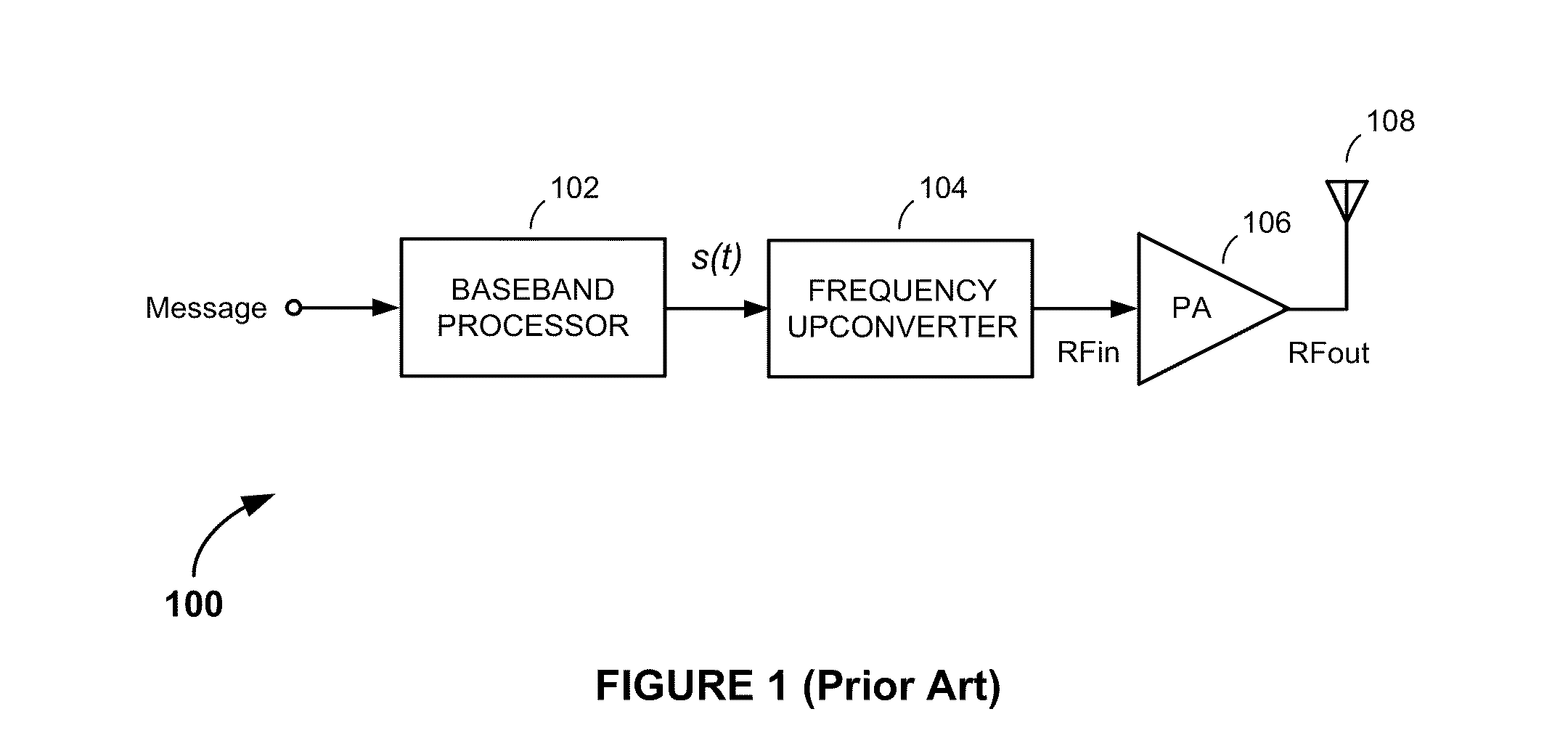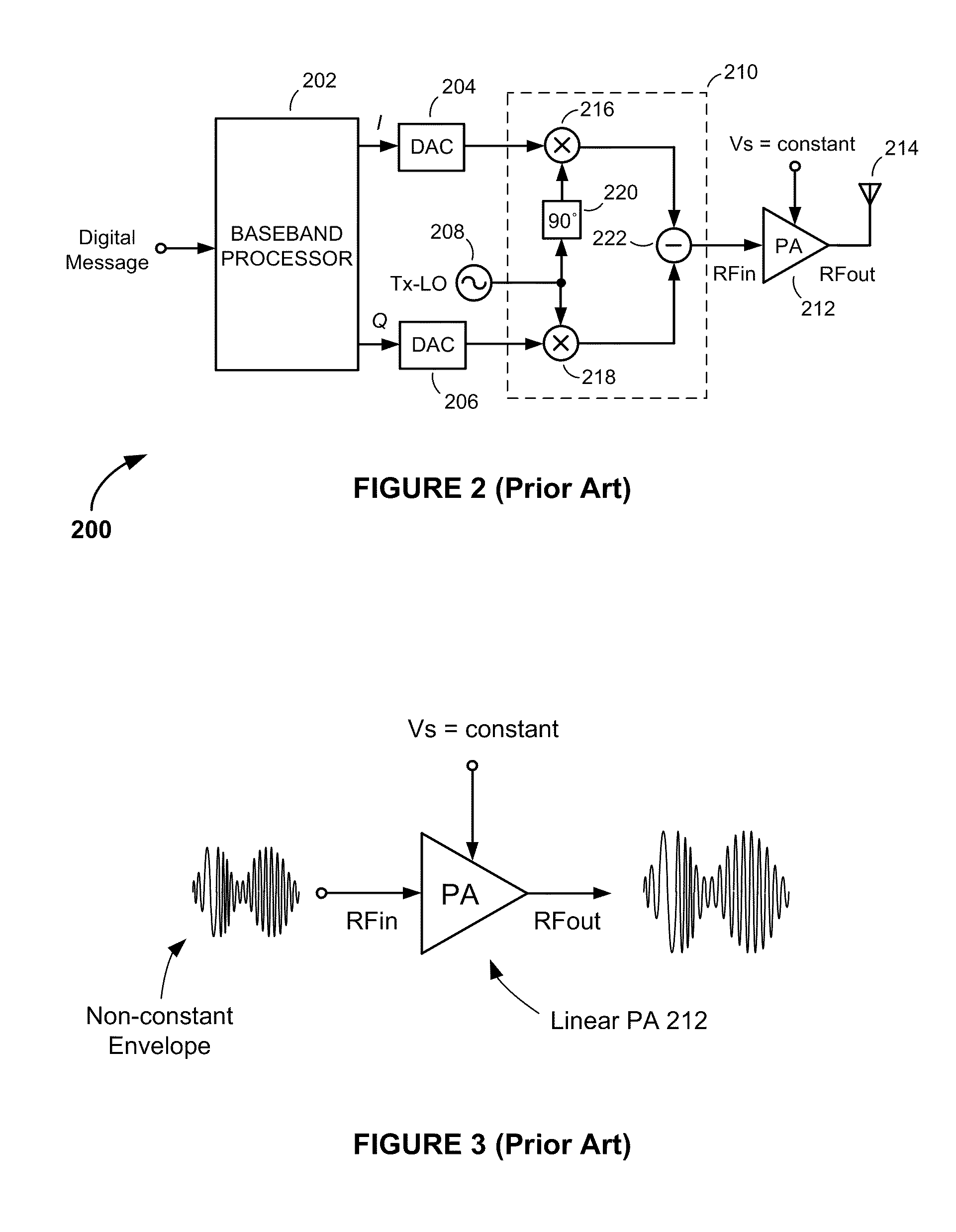Methods and Apparatus for Reducing Average-to-Minimum Power Ratio in Communications Signals
a technology of communication signals and power ratios, applied in the field of communication systems and methods, can solve the problems of significant energy efficiency reduction, low energy efficiency, and high energy efficiency when pa, and achieve the effect of reducing the average-to-minimum power ratio (ampr)
- Summary
- Abstract
- Description
- Claims
- Application Information
AI Technical Summary
Benefits of technology
Problems solved by technology
Method used
Image
Examples
Embodiment Construction
[0047]Referring to FIG. 10, there is shown a radio frequency (RF) transmitter 1000, according to an embodiment of the present invention. The RF transmitter 1000 comprises a baseband processor 1002, a digital-to-analog converter (DAC) 1004, a frequency upconverter 1006, a power amplifier (PA) 1008, and an antenna 1010. The baseband processor 1002 comprises a baseband modulator 1012, a pulse-shaping filter 1014, and an average-to-minimum power ratio (AMPR) reduction circuit 1016. The baseband processor 1002, DAC 1004, frequency upconverter 1006 and PA 1008 are formed in one or more integrated circuits. In the exemplary embodiment described here, the baseband processor 1002, including the baseband modulator 1012, pulse-shaping filter 1014, and AMPR reduction circuit 1016, are formed as a digital signal processor (DSP) in a single integrated circuit. The DSP may implemented as hardware or a combination of hardware and software, such as a microprocessor, microcontroller, field-programmab...
PUM
 Login to View More
Login to View More Abstract
Description
Claims
Application Information
 Login to View More
Login to View More - R&D
- Intellectual Property
- Life Sciences
- Materials
- Tech Scout
- Unparalleled Data Quality
- Higher Quality Content
- 60% Fewer Hallucinations
Browse by: Latest US Patents, China's latest patents, Technical Efficacy Thesaurus, Application Domain, Technology Topic, Popular Technical Reports.
© 2025 PatSnap. All rights reserved.Legal|Privacy policy|Modern Slavery Act Transparency Statement|Sitemap|About US| Contact US: help@patsnap.com



